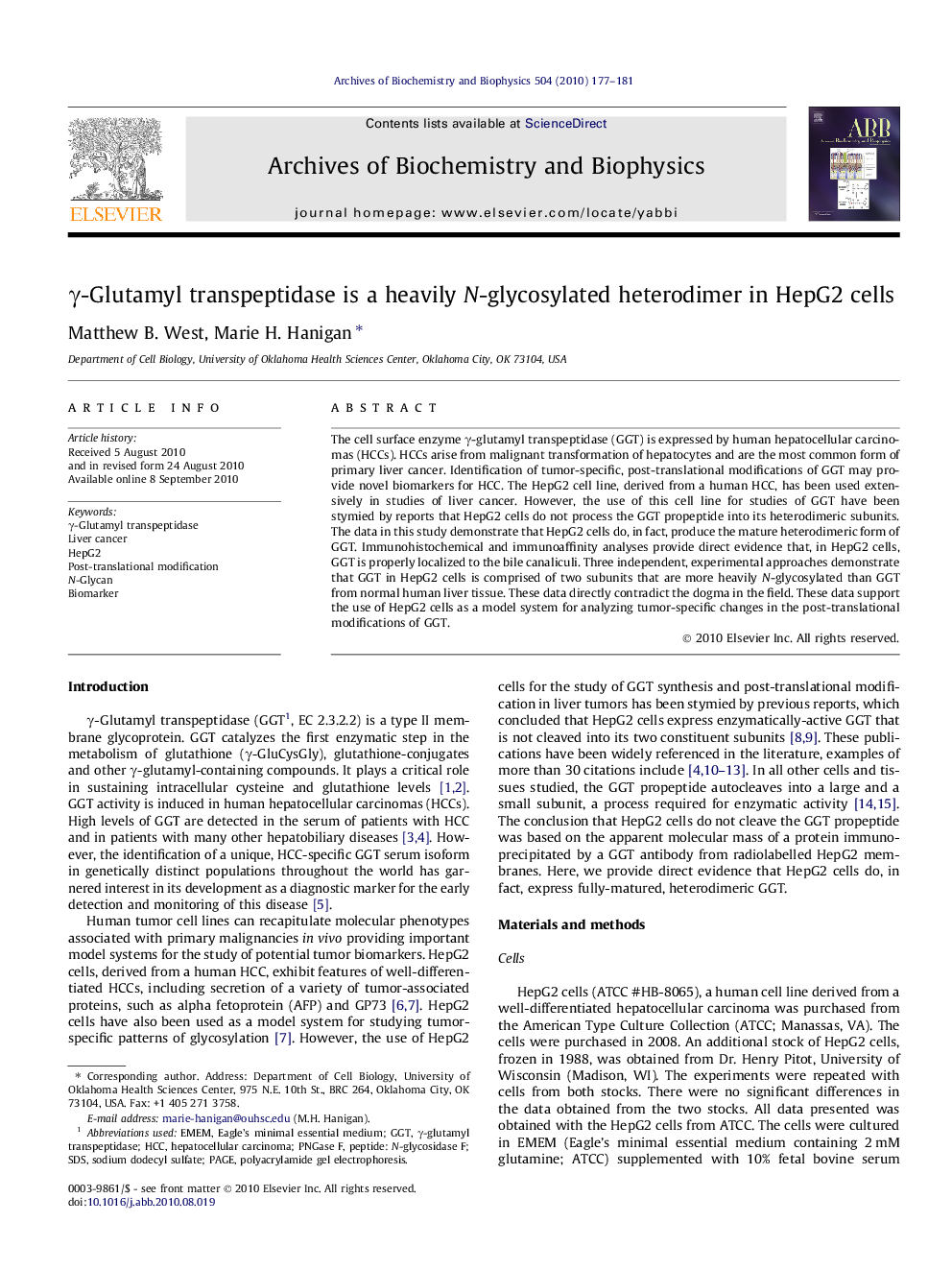| Article ID | Journal | Published Year | Pages | File Type |
|---|---|---|---|---|
| 1925965 | Archives of Biochemistry and Biophysics | 2010 | 5 Pages |
The cell surface enzyme γ-glutamyl transpeptidase (GGT) is expressed by human hepatocellular carcinomas (HCCs). HCCs arise from malignant transformation of hepatocytes and are the most common form of primary liver cancer. Identification of tumor-specific, post-translational modifications of GGT may provide novel biomarkers for HCC. The HepG2 cell line, derived from a human HCC, has been used extensively in studies of liver cancer. However, the use of this cell line for studies of GGT have been stymied by reports that HepG2 cells do not process the GGT propeptide into its heterodimeric subunits. The data in this study demonstrate that HepG2 cells do, in fact, produce the mature heterodimeric form of GGT. Immunohistochemical and immunoaffinity analyses provide direct evidence that, in HepG2 cells, GGT is properly localized to the bile canaliculi. Three independent, experimental approaches demonstrate that GGT in HepG2 cells is comprised of two subunits that are more heavily N-glycosylated than GGT from normal human liver tissue. These data directly contradict the dogma in the field. These data support the use of HepG2 cells as a model system for analyzing tumor-specific changes in the post-translational modifications of GGT.
Research highlights► γ-Glutamyl transpeptidase (GGT) propeptide is cleaved into two subunits in HepG2 cells. ► Altered N-glycosylation in this tumor cell line increases the apparent size of the subunits. ► These data disprove the dogma that GGT persists as a propeptide in HepG2 cells. ► HepG2 cells provide a model system for the study of GGT glycosylation in liver tumors.
